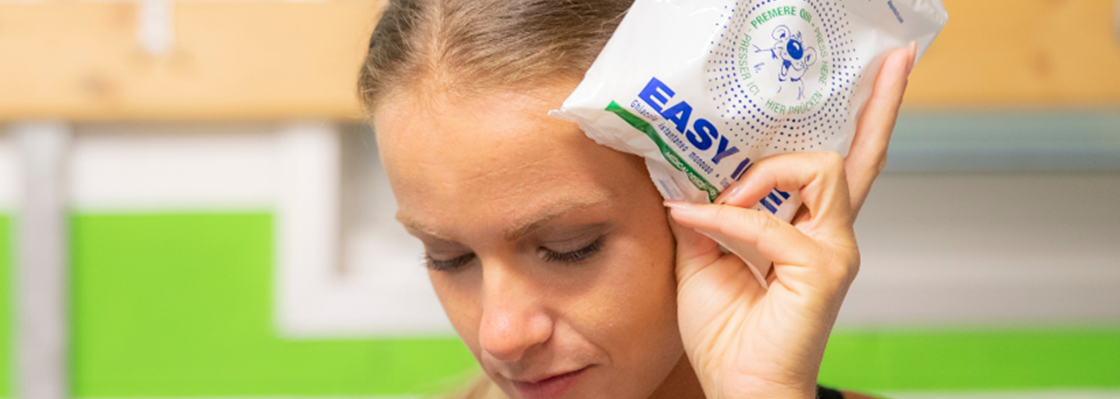Ice Pack, a drug-free remedy

Did you know that ice is a drug-free remedy that has been used for almost two centuries to combat headaches and migraines? Ice packs can provide great relief for all those who occasionally suffer from them.

Welcome back to the Dispotech blog!
Did you know that ice is a drug-free remedy that has been used for almost two centuries to combat headaches and migraines? Ice packs can provide great relief for all those who occasionally suffer from them.
According to a study conducted by the Cleveland Clinic, more than 75 per cent of the world’s adult population suffered from them at least once in the past year. Since headaches can be disabling and a problem when coping with the day before you, here are some tips you can put into practice if you want to avoid taking medication.
We will use an interesting article we read on rapidaid.com as support.
Before discussing how to treat headaches with ice packs, we’ll give you a proper overview on this ailment. Did you know that medicine today acknowledges more than 150 different types of headache? Scientific literature, however, basically divides them into two groups, depending on their nature.
- Primary headaches can be caused by: cluster headache, cerebral blood vessel disease, migraine, an impact to the head, new daily persistent headache (NDPH), hypertension.
- Unlike primary headaches, secondary headaches are related to pre-existing medical conditions and caused by: infection, drug abuse, sinusitis, trauma, tumours.
There are many other causes that may trigger a headache, which are: weather conditions, stress, menstruation, alcohol, exposure to too bright lights, physical activity, genetic predisposition, age, etc.
There are actions or behaviour that can help people prevent headaches and migraines or, if they occur, avoid taking medication. They consist of good habits such as:
- following a healthy diet which includes eating fruit, vegetables, grains and protein;
- drinking plentiful water during the day;
- staying outdoors for a while at least once a day;
- sleeping at least 7/8 hours nightly.
Easier said than done, of course, but these are habits that can be adopted with little effort and a little willpower. Not only will they help fight headaches, but they will improve your overall health.
Ice and cold therapies have been an effective method for almost 200 years. In 1849, James Arnott discovered that a mixture of salt and ice applied during a headache significantly reduced pain. Medicine and research have thoroughly examined the subject and it has been confirmed that cold therapies are absolutely valid for combatting headaches and migraines. Doctors recommend the use of ice packs and cold gel packs to relieve pain and to be able to carry out one’s normal daily activities.
For tension headaches, meaning those affecting the nape of the neck and characterised by persistent (but not pulsating) pain, hot compresses are recommended: heat can relax tense muscles and accelerate blood flow.
What is the best way to use a medical ice pack in case of a headache or migraine? You must apply the ice pack, cold gel pack or any other cold pack to the area in pain for no more than 20 minutes at a time. Protect your skin by wrapping the pack in a dry cloth. If your head hurts, it is recommended that you apply the pack to the neck or the base of the skull. Applications should be alternated in this manner: apply it for 20 minutes, then remove it for an hour. This way, pain can be reduced effectively. During ice pack therapies, symptoms such as coldness and numbness may occur: these are completely normal and temporary.
Ice packs are cheap and safe remedies for headaches. If you have doubts or questions about this matter, please contact your doctor!
What do you think about this article? Contact the Dispotech team












